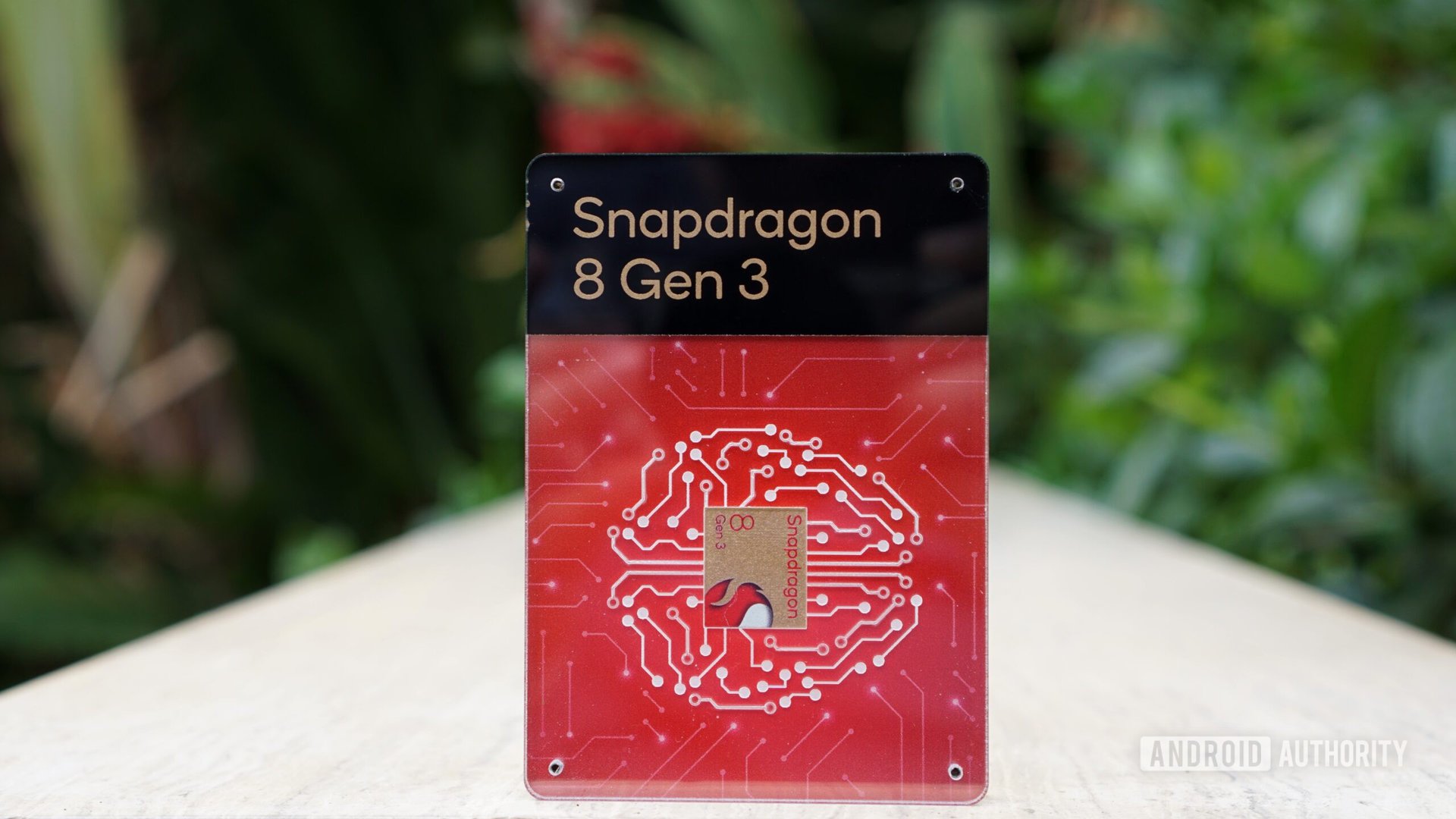This Is Why Android Processors Increasingly Look Like Apple's

Hadley Simmons / Android Authority
The end of another year brings us a leap forward into the next generation of smartphone computing power, accelerating the latest and greatest phones to new heights. The next few months will be one of the most exciting times in recent years for mobile chip development. We already know what Google's Tensor G3 and Apple's powerful A17 Pro will bring, but the new Snapdragon 8 Gen 3 and Dimensity 9300's beautiful multi-core processor caught my eye during today's discussion.
It's been more than a decade since Arm started big, mixing smaller, power-efficient CPU cores with larger, more powerful cores in a single cluster. In today's Arm DynamIQ era of mixing and matching multiple, disparate cores it's easy to take this development for granted. The first goal was to balance energy efficiency and increase productivity. However, when you consider Qualcomm's Snapdragon 8 Gen 3 and MediaTek's Dimension 9300, the first point doesn't seem to put too much pressure on the latest CPU cores.
8 Gen 3 is a mid-range configuration with a powerful ARM Cortex-X4 core, five A720 cores (divided into two clock domains) and two smaller A520 cores. The small core was Snapdaragon's downside; 8 Gen 1 had four of them, then 8 Gen 2 had three. MediaTek's Dimensity 9300 does away with the tiny cores altogether and adds four A720s to four Cortex-X 4s. Again, there's an overclocked X4 for single-threaded performance, but the use of lower-clocked, wider and more powerful CPU cores is what's most interesting about the design.
Snapdragon has gone from four to three, and now in the last three generations it has replaced two smaller cores with mid-range cores.
Despite the differences, both SoCs claim that most workloads will be handled by these medium processor cores. Powerful cores help with bursts and heavy single-threaded workloads, but getting clock speeds too high within the thermal limits of smartphones is not easy, and too many massive cores would be useless. On the other hand, it seems that there is not as much interest in low-power cores as in previous years (Qualcomm is probably less confident than MediaTek). Instead, ARM's lower-mid-range cores seem to scale well to different workloads, sleeping quickly for low-power tasks and joining modern multi-threaded workloads and games.
A look at the arm power/performance slide from the 2023 offering helps illustrate just how scalable the A720 can be. It also shows how powerful the X4 is if you want, but keep in mind that the X4 can only be added to desktop applications, so can't be fully realized as a smartphone. The A520, while clearly capable, doesn't cover such a wide range of performance. With dramatic improvements in power with larger cores in recent years and continued improvements in manufacturing efficiency, some chipset vendors clearly see smaller cores as more important.
A bit from Apple's tutorial
If it looks a little familiar, you've probably rolled your eyes at the Apple Fence Garden. The iPhone Bionic and the new A17 Pro chip use a familiar large-small core. However, Apple's smaller cores are historically closer to the older generation ARM Cortex-A7 series cores than the A5 series. In other words, Apple's architecture offers two powerful cores for core workloads, including four mid-range cores for handling background work, multi-threaded workloads, and games.
The latest A17 Pro showcases this approach. The 3nm bleeding edge manufacturing process allows the two large cores to hit an impressive 3.78GHz when needed, and the four smaller cores to hit a 2.11GHz. MediaTek takes a similar approach to the traditional A720 2.0 GHz to reduce power consumption. Qualcomm's current design is slightly different, aiming for a higher mid-core clock speed of 3.2GHz, but still featuring the A520 core in the ultra-low-power case.
Productivity gains and more efficient processors are driving demand for microchips.
However, Qualcomm is sticking with the idea that 2024's Snapdragon 8 Gen 4 won't require smaller cores. With just over a year to go, early leaks point to two large Phoenix cores and six smaller Phoenix M cores in the eighth-generation 4. Phoenix is Qualcomm's return to custom ARM-based processors (like Apple's), allowing engineers to optimize performance. and efficiency (again, like Apple). At least in theory. Maybe Qualcomm doesn't have three layers yet.
That said, we don't know Qualcomm's next custom core lineup. But given the direction it's headed, the six-core configuration seems to be aiming for mid-range performance rather than ultra-low power to stay competitive with Apple and Arm's Cortex offerings. If that happens, the 8th Gen 4 will look similar to Apple's, albeit with a higher core count, which could beat multi-core performance for the first time.
... but why?

Robert Triggs / Android Authority
All of this brings us to the question: Why is the Android SoC market moving again, and does it really matter for our smartphones?
As mentioned, this is due to the ever-increasing number of ARM CPU cores combined with smaller (but more expensive) manufacturing processes, with only low-power CPU cores handling almost all background work. For example, MediaTek claims that its highly redundant architecture can save 10-15% of power for typical workloads compared to previous generations, especially when returning to sleep mode quickly.
Speaking of workloads, ARM engineers have been vocal about the importance of central cores in recent years. Bigger cores are great for loading your apps, but you want better responsiveness and efficiency when browsing Facebook and replying to messages. Most of our daily mobile traffic occurs between high and low power states. Even the latest mobile games you might think require powerful processors run mostly on these mid-range cores. Chipsets like the 8 Gen 3, A17 Pro and Dimensity 9300 are where developers optimize their processors for the most common mobile workloads.
New use cases demand more performance from our phone batteries.
For users , these changes will result in better performance without compromising battery life for the reasons mentioned above . While we may consider today's smartphones more than adequate for daily use, new use cases require more performance with very limited battery life. Artificial intelligence is the tech buzzword of 2023, but running AI models on devices is a complex task that requires more memory and processing power. So Qualcomm, Google and others are trying to increase their power to reduce the number of NPUs that make up a processor's typical power. Creating a AAA game is another area that requires better graphics capabilities and performance, but efficient CPU cores to run the physics, logic and GPU. Apple has upped the ante on console gaming with the iPhone 15 Pro, and Android doesn't want to be left behind in the coming years.
A reliable processor is the glue that holds these capabilities together. With increasing performance demands and lack of battery life or thermal issues, it's no surprise that highly balanced cores have played an important role in the development of today's smartphone SoCs.

